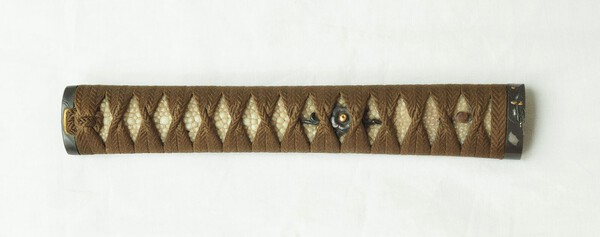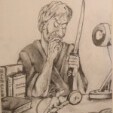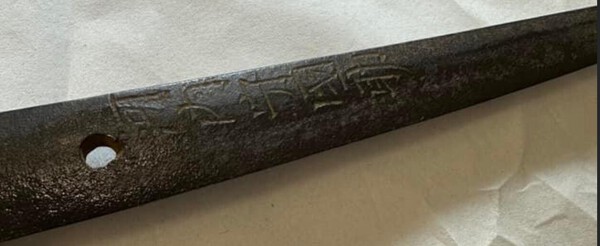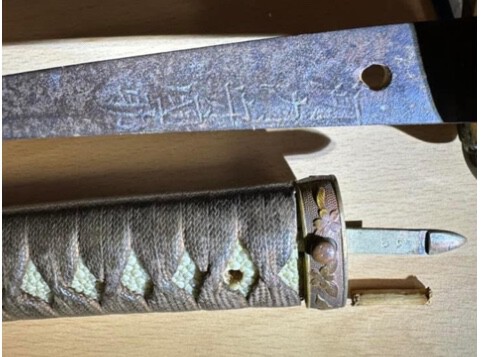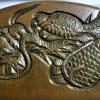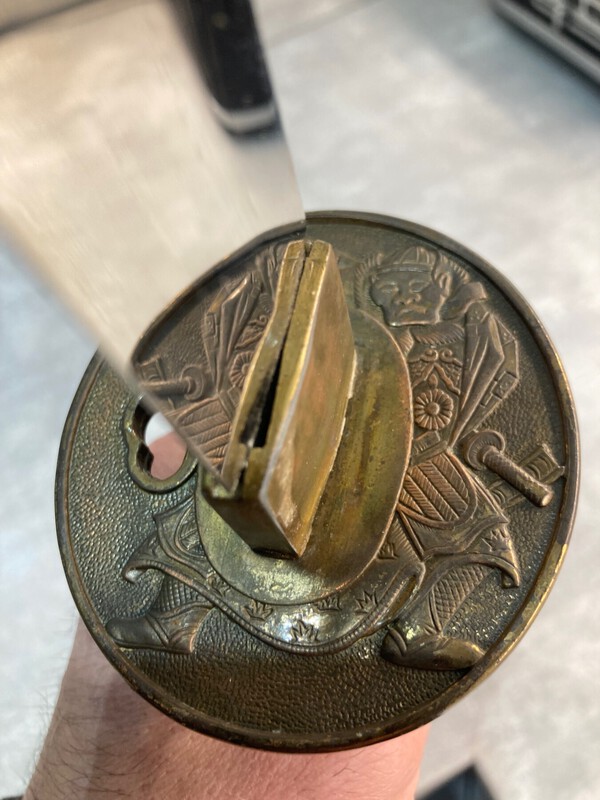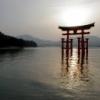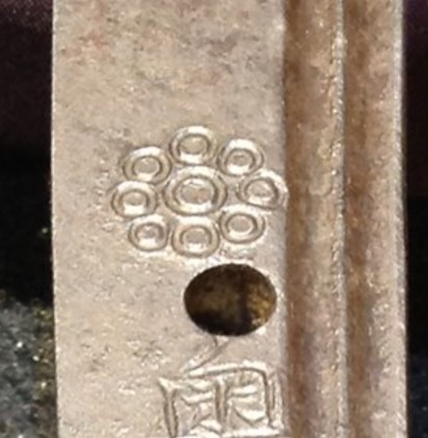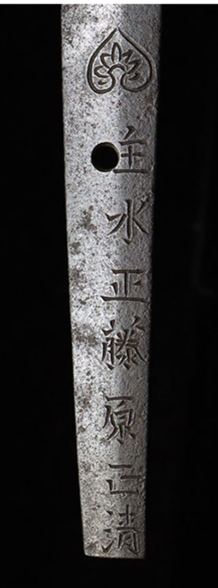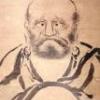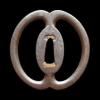Leaderboard
Popular Content
Showing content with the highest reputation on 07/18/2024 in Posts
-
5 points
-
生中心在銘 時代承元之頃 成章添状付 Ubu, zaimei Circa Jōgen (1207-1211) With paper from Nariaki (Nisshū's great great grandfather) Small typo in Jan's post 照 > 昭5 points
-
Samurai Art, Im sorry I dont know who you are really and have not heard of you previously, I have only seen a few of the things you have written here as I just joined. I was only trying to clarify some of your mistakes, but I am an amateur and did not mean to offend or embarrass you. I did study Japanese in my university and have done home stays, so my Japanese is pretty good. I have also been learning here in Japan for some time. I was only trying to correct some of the terrible mistakes you have made regarding Urushi, such as the names of the urushi, and the most funny was where you mistook the word furo (which means "bath tub") for the word Muro which is a temperature/humidity controlled chamber. I think you can probably do urushi in a bath tub though if you like. Though, I really regret some of the things that you have said regarding the abilities of the artists in Japan though that is insulting to them and people like me who have made the long walk to study under them. That is not fair to them, and it turns many people away from this beautiful country. People who might have the dream of coming here to learn, or hiring a traditional artiste to do work for them. I was lucky to have met some people who guided my path here. I did not mean to embarrass you by pointing out your mistakes as I am just an amateur. I of course have just begun my journey, so I do not wish to make any enemies here. One thing that I don’t understand though, You say Mister Mancabelli’s teacher, Miura Hiromichi said that you were a much better student than his own students, and that is why Andy (current Miura sensei), dislikes you? Im sure you know, because you have watched Japanese television about this, but Miura Hiromichi, named Andy as his “atotsugi” which means heir, or successor. He gave Andy permission to use his name “Miura” and when I met with him, he called Andy “Anjin” because he was not able to phonetically pronunce his name correctly. This was cute. And Miura sensei told Andy to use it as his “shu mei” or pen name. It is also the name of his registered company. If you met Miura sensei, he would have pronunced your name as “De-Bu” which in Japanese is a derogatory term for "Grossly obese". I know it is very ironic because you are probably very skinny, which is also funny. I was told that Miura Sensei was from the Miura hanto peninsula originally, which was were Miura Anjin - William Adam’s family and estate was located. It is actually possible that there is a direct connection to William Adams that you mentioned. Now Andy is “Miura sensei” I dont think many foreigners have been named successors to living treasures. I have seen his work and it is worthy and amazing. And shamefully, I am still a beginner, so I have nothing of worth to show. Maybe I can have something for you in a few years….. I hope. For now, I will only share what knowledge I have been able to learn from the kind teachers I have met.3 points
-
Thanks Mike for starting this off, I believe Mountbatten's actions saved many historic items from destruction. Many thanks John C. saved me from going through many old boxes. Thanks too, to John, I'd completely forgotten about that article. Regards the swords he acquired for himself ( B W Robinson ) Back in the early seventies I went to view an auction at Elliot and Snowden. It was a hot sunny day and propping open a door leading to the pavement was a leather clad gunto. A brown ticket label was attached to the hilt, on which was written "Brought back from Malaya, B W Robinson" There was no mistake it was his handwriting which was so very distinctive. On a quick search found this.3 points
-
I'll start with the second one: [照]昭和癸丑歲仲秋誌之 = recorded this in mid-autumn in Shōwa, year of the water ox (1973 CE) Edit: fixed silly typo, thanks Steve!3 points
-
3 points
-
Kudos, finding an undervalued piece is the dream of every collector, much better IMHO than acquire a certified piece. Adding value through knowledge is the very essence of collectionism.3 points
-
Programmes can be read here, including #37 and #81: https://to-ken.uk/re...ihonto-magazine.html John C.3 points
-
Well, that's a mind blower, finding out it is published. I wonder how it got to Singapore? The Japanese refer to that as a horidashi, or a great piece bought cheap.3 points
-
I may be late to this conversation but yes I have seen this form called Toppai kabuto. Shiinari is usually used for higher vaulted or more pointed toppai kabuto. And I think that you are correct in both of your assumptions. that is similar to the way that they used to write the kanji for “20”. This is more likely the katakana for “sa”. I have seen army presentation maps were the different groups in formations were noted as katakana in the Japanese phonetic alphabet for their relative positions. such as batallion 1, 2, 3, 4. = battalion sa shi su se so. and so on.2 points
-
One of the kindest and most helpful people I have met. Yes very busy, but will always make time with advance notice.2 points
-
I usually mostly lurk but damn. You certainly had the time for something as trivial as slandering people like Nishioka but for some reason don't have time to explain baby's first urushi ? I too have had the occasion to meet with mr Nishioka earlier this year and most of what that Henry dude said is right. It's also incredibly disrespectful to him to say that he's unable to get a proper urushi finish, and that no katchu-shi is able to, are you in a better position than Japanese museums to judge that ? You're making a mistake at toddler-level Japanese with using a furo instead of a muro, a furo is a goddamn bath for christ's sake, and we're supposed to believe that you're fit to judge people that are spending their lives doing this job ? That's N5 level Japanese, any damn beginner will make the difference. Useless information, unless you're genuinely expecting people in here to have a room temperature IQ and being unable to differentiate an artist name and a long dead historical figure. I can't even fathom why you thought it'd be pertinent to put that information here, the only thing it serves is being patronizing and it's pretty disrespectful to the people here. Also cool backpedaling here about the Sabi nuri, while you clearly said "sabi-urushi nuri" at first. Calling bluff on that one. If I'm not mistaken you've met the man just once, surely this is not enough time to judge someone's work. My brother in Christ, you just boasted about your skills in the same bloody post. The burden of proof is on you for all the wild stuff you're claiming. Your posts have only been dumb claims with nothing to back them, and you dare ask other to show their stuff. Andy isn't even in the goddamn thread but instead of refuting the points made you're asking someone that's not here to post his work. That's how rent-free he lives in your head. Instead of relying on ad-hominem the moment your claims get challenged, next time, make a proper answer like a grown man would. I used to look up to you, then started getting suspicions when interacting with you, but now it's pretty evident that you're just LARPing as a katchushi. All that stance about being humble goes out the window the moment you get challenged. It's unfitting of what you're pretending to be. Agreed. I've had the chance to meet him, as well as a few other Shokunin and everything that's been told has been positive, reinforcing the idea that Dave's been spouting bullshit since the beginning.2 points
-
2 points
-
Probably useful with this bottle of Saké - - https://rakusake.com/product/detail/658 or this 21 year old Shōchū - https://www.jauce.com/auction/t1139222519 Bottoms up! 乾杯2 points
-
I can support Henry’s statement about Andy San! Met him last year in Japan. Very nice guy, but always busy, hence hard to get an appointment2 points
-
I would try talking to somebody else on facebook. Try in Japanese. Many very helpful artists there who will not lead you in the wrong direction. If you are in Japan and need advice, Miura sensei has helped me so much in the right direction. But you would have to travel to Japan to meet him in person. There are also some workshops in Japan that teach urushi (not for armor) which offer short courses for amateurs and people who wish to have a hobby. It can help as an introduction to this art.2 points
-
This statement is the most disingenuous thing I have seen written on this thread. There are indeed people to learn from in Japan. I know, thats why I traveled half way around the world to do so. Such a statement only operates to hurt the reputations of the more than qualified artists here in Japan who have devoted their lives to the betterment of traditional art. If you really wanted your son to learn from the best, I would suggest sending him to Japan. Mancabelli (Miura Anjin) only does tradional work. Nishioka is capable of traditional work and is trained, however I think some of the students are using non-traditional methods at least for their new work and harikake helmets that they make. Ogawa does not use traditional methods and many of his orders in recent times are done in aluminum. He himself has stated that his works are for cosplay and hobbiests. He is a nice man and has been very straightforward about his techniques. Most of the current traditional armourers living in Japan have come from or been influenced by the Morita Tomojiro line. The information about rawhide here is also wrong. They did not wait three years to make armours out of it in the olden days . You just have to be taught how to work with it and prepare it before lacquer. When working with rawhide, you do use steam to mould it. Of course, they applied urushi shortly afterward. Fake urushi will not work with rawhide. If you use fake urushi it will fail. The procedure for lacquering rawhide is of course different from that of iron and you must learn the techniques. Do you use real urushi? Where did you study? Who was your teacher? Its not a “furo” its a “MURO” and there is a big difference between the two! There are currently, other sellers of traditional urushi besides Watanabe. But I found them through Miura sensei’s instagram where he gives directions to their website and shop to help promote traditional art. he told me that he will continue to add more such information to the page.2 points
-
Hi, This information is not actually correct. I have found that sometimes the words used in local areas, and depending on the particular profession, what the artist calls the materials can change. However, what you are calling “sabiji urushi” is absolutely wrong for Japanese armour, and I cannot see how it could be right for other professions such as box lacquering, bowl lacquering etc. Armour is the most difficult of all of the arts to do lacquer on and uses different techniques. What Samurai art is talking about is “sabi ji nuri” which means literally “rust finish coating”. It is basically a “makiji” coating covered with either one or two additional coats of seshhime, or a pigmented urushi that gives it the appearance of a “rusted finish”. For armour, the base coat that Samurai Art mentions does not use some of the ingredients, and certainly not as a combination, though it can use some of them. Also, Tonoko is not dried volcanic clay. Clay is sedimentary and it is derived from sedimentary deposits in different locations in Japan and in the olden days, leftover polishing stone powder (from stone polishers) could be used as as well for particular work such as makie etc.(uchiko) By rumour the best tonoko comes from Kyoto. However in Wajima (Ichikawa) they do use a type of jinoko (dirt) that is derived from a different process. In recent years they do not allow people outside of their artiste group to acquire it, and it is a shame. I do agree that there are few books in non-japonese language but there are many books in Japanese, and there are some good videos in Japanese and English about proper urushi. Mancabelli sensei is trying to save the traditional arts here in Japan by promoting the dealers and giving information for those trying to learn. There is a very large difference with real urushi and fake urushi such as cashew. and they do not mix. fake urushi should never be used for restoration and damages/destroys the original item. there are too many points to mention here. Real urushi does take a high level of commitment, literally a lifetime. Most would be restourers or artists do not want to take the time to learn how to work with it. But actually YES there are books, and YES there are very capable people in existence that are very qualified to help devoted, serious newcomers. Unfortunately they are currently mostly living in Japan.2 points
-
#100 also has the following essay: https://to-ken.uk/onewebmedia/Programme 100 July 1978.pdf Japanese Surrendered Swords: A Reminiscence of 1945 - B.W. Robinson2 points
-
2 points
-
2 points
-
Wow. Here I was thinking that tsuba looked familiar.... Now I know why. $175 purchase price also pops my brain a wee bit.2 points
-
To-ken Society of GB monthly newsletter "Programme 81" gives an account of the talk given by Basil Robinson. He reminisces the time as a British army captain he sorted through 1800 surrendered swords in 1945. Mountbatten had access to all of these. "Programme No.37" has a letter from Han Bing Siong describing the sword at Windsor Castle and speculates on the sword Mountbatten returned to Japan. Unfortunately, I cannot lay my hands on these newsletters at the moment, perhaps someone has copies of them? Back in early postwar Britain Mountbatten wrote a memo listing those who were to be presented with swords but noted that they haven't arrived in the UK yet . I'm still searching for this. On the internet somewhere is a film clip of Mountbatten at his home, holding one of the swords surrendered to him, he talks at length on this. I'll look for it when I get time.. A gunto sword with a blade by Yasutsugu is on display at the Commando Training Centre and is presented annually. It is yet another one said to have belonged to Field Marshal Count Terauchi Hisaichi. It's known as the Mountbatten Sword. Quite a few pictures of this sword being presented at that establishment can be googled.2 points
-
Gentleman, I just got my copy of Owari To Mikawa No Tanko. Plate #240 is actually my tsuba. The groove in the nakago-ana really clinches the identification. Incredible luck to have blindly purchased a $175 tsuba 25 years ago in Singapore, only to come full circle to its provenance. Thanks so much, one and all for urging me not to take a blow torch to "fix" this tsuba .2 points
-
2 points
-
1 point
-
I am in danger of doing a little blatant advertising, but I believe it worthwhile and important. Let me say up front that I have been a member of the NBTHK EU for a good number of years and am very proud to be associated with it. Therefore you will have no doubt as to my personal alliances. Last weekend I had the great pleasure of attending the most recent meeting in Bonn. I understand that other members who attended may write a brief report on the event itself and I will leave it to them to give their views on some of the work on display and the discussion around it. Having had a thoroughly enjoyable and educational time I started to think a little more about perceptions of such societies and what we may be missing. Not a week goes by on the board without reference somewhere to an NBTHK paper. Most people here when asked what the NBTHK did I think would refer to shinsa and authentication. It has become a major part of our approach to buying, especially over the web. What we tend to overlook is the incredible contribution this organisation makes to educating us. I have said here before that I believe the best educational tool there is in this field is doing kantei.If you do not have access to high level swords, which few of us do on a regular basis, then doing the Shijo kantei in the NBTHK magazine is a worthwhile alternative. Whether you submit your answers, if you do whether you get it right is irrelevant what is important is the process. I spent the first 10 years of my collecting career being afraid of doing kantei in case I looked an idiot. I have spent the next 20 knowing I was an idiot for wasting the first 10 years. Taking part in this activty has been greatly enhanced by the publication of Markus Seskos works on the subject and more European names are appearing on the lists of successful participants. New members here often ask what books they should buy to learn. Thanks to people such as Grey there are far more Japanese works available to us than ever before and they represnt great value. However I would suggest one of the best investments in literature for anyone would be to join the NBTHK, whether European or US groups. This automatically offers you 12 copies annually of the NBTHK magazine with a comprehensive English translation available to download. These means that Oshigata of 5 or more blades and fittings are illustrated and described in great detail. I think for the magazine alone membership offers great value. In addition if you can attend the meetings you have the opportunity to see incredble pieces generously offered for study by experienced collectors. As said above this is a rather shameless plug for a worthwhile organisation. becoming a member was undoubtedly the best decision and investment I made. and I believe for those who are enthusiastic and want to learn from an excellent source it would prove the same.1 point
-
Hi I've been asked if I can find out about the origins of this sword. The sword itself was presented to the town of Romsey in the South of England by Lord Mountbatten. Hopefully the photos are OK as they are all that been provided to me. I think this is most likely the first time the handle has been off since it was presented to the town. Thanks for your assistance as always.1 point
-
I have had this small Kanayama tsuba for some time, purchased in Singapore before I started collecting tsuba, and subsequently lost during move back to Boston. It has been rediscovered, although I honestly don't know how I acquired it and from whom is was purchased (probably on eBay or an antique shop). I did have an interest in nihonto and Japanese antiques in general at that time. Anyways, it took me a while to notice that there is a well-defined gouge or cut out in an elongated and sharp vertical groove present on the left middle edge of the nakago-ana. I thought it was damage. However, in Eckhard Kremers study "A Kyoto Master and His Workshop," he describes this kind of feature as common to Ko-Sukashi from the same workshop if not the master (see photo below from his study). These gaps were often filled with strips of copper indistinguishable from the sekigane that we often see including those present on my tsuba. Has anyone else encountered this kind of cut out? Who can fill it in with a copper strip? I'm pretty handy with metalwork applied to restoration of vintage electric guitars, but I am not keen on tackling this kind of work.1 point
-
Greetings, picked this WWII Sword up at the Forks of Delaware Gun Show from a good friend of mine for a very honest price. The handle is rewrapped and other than that complete and in very good shape. The blade is arsenal made and has a little arsenal stamp but just a nice weight and balance that I truly appreciate. Can anyone please help me with the smith and year and month? Thank you very much for comments and insight. God Bless1 point
-
Thank you Yojimbo for the compliment. However, I am not quite his equal. Still learning, so I am currently only book smart and trying to learn from the best.1 point
-
I was referring to the printed number in the top right corner of the papers ie No 3003067). The Shinsa was Heisei 25 but the original registration papers were from 1952 if I'm not mistaken (from info within the box bottom left).1 point
-
Sorry, I know virtually nothing about Nariaki. I only know he is a few generations from Nisshū. What little I know comes from this site below https://meitou.info/index.php/本阿弥1 point
-
Hi Trevor, I saw your post. I am studying in Japan about Japanese armour, lacquer, sword fittings, swords and related. If you wish to learn more, Andrew Mancabelli was very kind and has been helping my studie. His teacher was the most famouse armourer in the 20th century and he currently runs a traditional workshop in Japan. It is very difficult to get an intruduction but he has done a lot of work for the public including a bunch of video tutorials on traditional REAL urushi (Japanese lacquer) and lacing on his instagram page and facebook. I dont think that you would be able to find a better advisor. Actually, one of the photos that you posted is his and is currently in a museum for display.1 point
-
Do the seppa and tsuba have any markings on them? The nakago has tick marks near the mune. Just curious if those correlate to any markings on the fittings. Conway1 point
-
1 point
-
I dunno John, guessing very few in the UK. Quite a few stores sold wall hangers back in the 80s. Just thought id take a look, forgot i have a Ninja sword too, thats actually pretty decent made with a 440 Stainless steel blade. Sadly under UK law now then i guess ownership of my first sentimental swords is now a bit dodgy. I know this site is for real Nihonto but as a kid barely into his teens, they made a few xmas days very special Ito actually not too bad lol1 point
-
1 point
-
Guessing that they were done as a quick and shoddy way to tighten up the fit and stop things rattling around, with regards wrong thickness seppa. Though just a guess.1 point
-
Ok, I have some. The "Date" family crest on an 18th century blade: There are the Tokugawa mon: 9th Generation The 1-leaf Tokugawa emblem From Sesko: Eighth Tokugawa-shôgun Yoshimune (徳川吉宗), 1684-1751)” was “unhappy with the general decline in the quality of blades at his time … his project that peaked in the 1721” was a “sword forging contest.” “There were four winners selected, namely … Masakiyo … Yasuyo … the 4th generation Nanki Shigekuni (南紀重国) and the Chikuzen smith Nobukuni Shigekane (信国重包).” … “The tang bears the single leaf of the Tokugawa aoi crest granted to the winners of the contest.”1 point
-
Unfortunately I cannot find this particular smith in any of the swordsmith indexes. I cannot find a Yasuhiro smith who would sign like this. One thing to consider is also the very long length and lack of curvature. As the sword has been shortened by considerable amount it would likely be 85cm+ in original form. I feel my thought might wander towards kinnōtō, however that is just total speculation and the nakago looks fair bit older than I would think for them. Of course there were some long and straightish katana produced in multiple periods, just that they were bit outside of the norm.1 point
-
Samurai and lower-ranked warriors who could not afford armour were loaned it. In the case of Hatamoto samurai, armour might also have been loaned to reflect their rank and ensure uniform appearance. These okashi could range from the highest level of craftsmanship to the most basic. During the Warring States period, and especially from the late Muromachi to the Edo period, armour was designed for practical use. It was constructed to be identifiable from a distance. However, after the Tokugawa unified Japan and war became rare, armour became more decorative, with details meant to be appreciated up close. Armour continued to be used for ceremonial purposes until the late Edo period, when concerns about an American invasion again led to the production of battle-ready armour. During the Warring States period and up to the siege of Osaka, armour needed to be maintained and produced quickly. Consequently, the urushi layers were often thinner. This type of lacquering was sufficient when maintained properly. However, after the samurai class was abolished, there was no longer a need to own armour or pay for its high maintenance costs. Armour was stored away, often repurposed, merged with other pieces, turned into tourist items, or exported. The term ubu is often misused to describe badly damaged items. While an item's condition might be "as found," it does not reflect its original state. The main issue with the lower layers of urushi is that they are not waterproof. As a result, moisture enters through the odoshi-no-ana (the holes for lacing), the joints between plates on the inside, and from chips. This moisture spreads, causing rust, which eventually delaminates the upper urushi layers. Cracks appear, and pieces fall off. The silk also degrades and turns to dust after 80-100 years. So, the bad condition is caused by poor storage and handling and lack of maintenance.1 point
-
Hi Mike, What Piers said, maybe a light oiling of the blade but DO NOT clean the tang. Sorry for the over emphasis but the patina on the tang witnesses the blade’s age and should be left as is. Yes, it’s not a military issue blade from the signature. It’s could either be passed down within a family or re-issued after a donation to the war effort. I’m not a military sword guy so others can chip in but appeals went out for blades to be donated to the cause. Sorry, just saw your post of the presentation: fantastic!!1 point
-
1 point
-
Cox, Malcolm E. Showa Period Swordsmiths of Fukuoka Prefecture, Kyushu, and the Kokura Arsenal. 2024. A4 size, 149 pages, B&W & color illustrations. Besides gendai Fukuoka swordsmiths, this study also covers the arsenal markings used on RJT blades made under the supervision of Kokura Army Arsenal. For this reason, it covers some of the surrounding prefectures under the jurisdiction of Kokura Army Arsenal. This is the first serious English language study of this aspect of wartime blade production.1 point
-
Just sent him a PM. Thank you for the suggestion. I will let you know how I make out MikeR1 point
-
濃刕関住人源天秀謹作之 – Resident in Noshu Seki, Amahide respectfully made this. 皇紀二千六百年拾月日 – 2600 Imperial year (1940), 10th month1 point
-
Yes, 貞継 Takai Sadatsugu 高井 貞次郎 "SADATSUGU (貞次), Shōwa (昭和, 1926-1989), Gifu – “Sadatsugu” (貞次), family name Takai (高井), rikugun-jumei-tōshō, ryōkō no jōi (Akihide), Fifth Seat at the 6th Shinsaku Nihontō Denrankai (新作日本刀展覧会, 1941)" An RJT qualified smith. No chance there's a faint star near the top of the mei side? The only other blade I have of his is a Tan stamped blade from 1942. Also, can you tell if the blade is gendaito or oil tempered? Close-ups of the hamon would be nice.1 point
-
That makes sense. Thanks for the explanation. Now I understand how these alterations are part of the history of the guard just as repairs on tea bowls are appreciated as beautiful by the wabi-sabi-yugen aesthetics of the Momoyama and early Edo periods.1 point
This leaderboard is set to Johannesburg/GMT+02:00



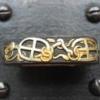


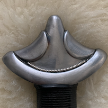
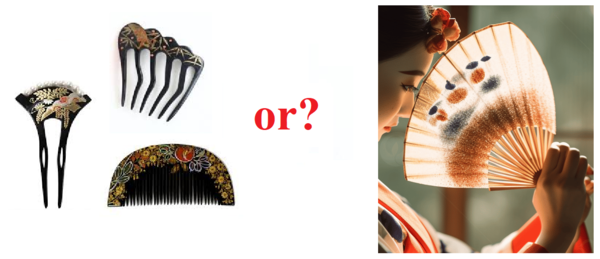

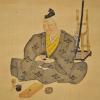
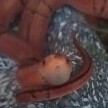


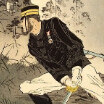





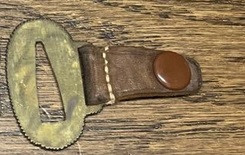







(1).thumb.jpg.4d8b4e979dd2c0a3ad9c597311b3e0aa.jpg)


